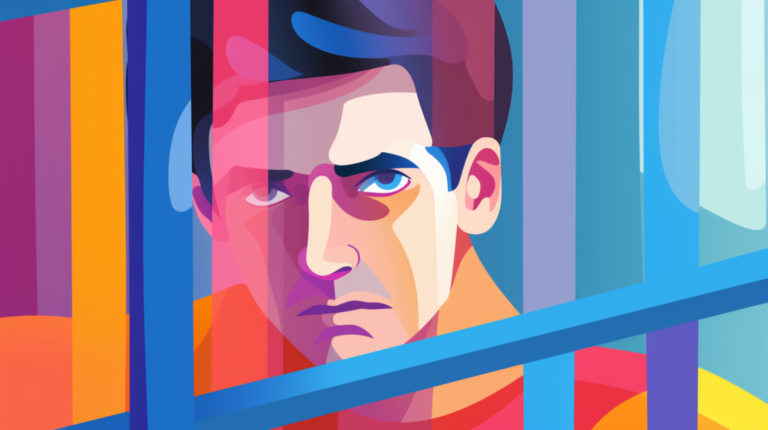How To Implement The Debt Snowball Method

Key Takeaways
- The Debt Snowball Method helps you pay off small debts first. This win makes you feel good and ready to beat bigger debts.
- You start this method by listing all your debts. Then, go from the smallest debt to the largest one.
- Pay as much as you can on your smallest debt while making minimum payments for other loans.
- After paying off a debt, use that money on the next loan in line. It’s like rolling a snowball down a hill – it gets faster with each step!
- This method does not care about interest rates but focuses more on changing your behavior about money.
- The Debt Avalanche Method and Debt Consolidation are different ways to handle debt if the Debt Snowball Method isn’t right for you.
Understanding the Debt Snowball Method
The Debt Snowball Method helps you pay off debt. It is a step-by-step plan from Dave Ramsey’s 7 Baby Steps. You first list all your debts, except your home loan. Start with the smallest one and go up to the biggest. Then, pay as much money as you can towards that small debt. Still make minimum payments on all your other debts though. When that smallest debt is gone, move on to the second smallest one. Take what you were paying on the first (now paid-off) debt and add it to the minimum payment of the second one. This method ignores interest rates but focuses more on behavior change than math calculations. The idea here is quick progress gives motivation which fuels further financial success!Why the Debt Snowball Method Works
 The effectiveness of the Debt Snowball Method lies in its psychological impact. By disregarding interest rates and instead focusing on paying off smallest debts first, people often feel a sense of achievement early on. This quick progress fosters motivation to continue tackling larger debts, creating a snowball effect that accelerates debt reduction. It’s essentially about harnessing our human instincts for immediate gratification and momentum to create lasting change in our financial behavior.
The effectiveness of the Debt Snowball Method lies in its psychological impact. By disregarding interest rates and instead focusing on paying off smallest debts first, people often feel a sense of achievement early on. This quick progress fosters motivation to continue tackling larger debts, creating a snowball effect that accelerates debt reduction. It’s essentially about harnessing our human instincts for immediate gratification and momentum to create lasting change in our financial behavior.Ignoring Interest Rates
The Debt Snowball Method does not care about interest rates. It’s true! This method puts all focus on the size of the debt, not its cost over time. You list your debts from smallest to largest, no matter what the interest rate is. Why? The goal of this method is changing your behavior, not just paying less in the long run. Ignoring interest rates may seem odd at first. Most people think they should tackle high-interest debts early on. But with this debt-reduction strategy, it’s more about quick wins and seeing progress right away than being perfect with numbers. This hands-on approach keeps you motivated to reach a debt-free life faster than other methods might.Focusing on Small Debts
Start with the tiny debts first! That’s a key step in the Debt Snowball Method. Paying off small debts feels good. It gives you a quick win. You can then use that same amount to pay your next, slightly bigger debt. This way, you’re making fast progress toward being debt-free. You feel like winning the money game! The best part? Your hard work shows results soon because of this method. So start snowballing your smallest debt today and watch it melt away!How to Implement the Debt Snowball Method
 To implement the Debt Snowball Method, start by listing your debts from smallest to largest. Focus on paying off the smallest debt first while making minimum payments on all other debts. Once the smallest debt is paid, use the money you were paying on it to tackle the next smallest debt – this way, you’re creating a “snowball effect”.
To implement the Debt Snowball Method, start by listing your debts from smallest to largest. Focus on paying off the smallest debt first while making minimum payments on all other debts. Once the smallest debt is paid, use the money you were paying on it to tackle the next smallest debt – this way, you’re creating a “snowball effect”.Listing Your Debts
To start with the Debt Snowball Method, you need to list all your debts. Write down each one from smallest to largest in size. This list must not include your mortgage. The order of this list is very important. It goes by the size of the debt, not the interest rate. Put all your focus on your smallest debt and make sure you pay it off as fast as possible! For all other debts, just pay out the minimum amount every time.Paying Off the Smallest Debt First
Start by tackling the smallest obligation. Pay this debt off with all your might. Use extra money from your budget to do this. Keep making minimum payments for other loans. Once you pay off the smallest debt, you will feel good and proud! This win gives you hope and power to beat bigger debts. You are on a roll now, so keep going!Rolling Payments to the Next Debt
Paying off one debt feels good. Now, take that money and chase the next target! With the snowball method, you don’t rest after crossing off a debt. Instead, you roll that payment into your plan for the next debt. It quickens your pay-off pace with each step. Bigger payments go to bigger debts later on. And just like a rolling snowball picks up speed downhill, so too does this process of paying down debts!An Example of the Debt Snowball Method
Let’s look at John’s case. He has four debts. He owes $500 on a credit card, $1000 for his car loan, $2000 in student loans, and lastly, a big medical bill of $8000. Using the Debt Snowball Method, he starts by listing his debts from smallest to largest. So first comes the credit card debt of $500. John pays as much as he can towards this while still making minimum payments on his other debts. In time, he clears off the credit card debt fully! Now it is time for John to tackle the next smallest debt which is his car loan of $1000. All the money he was using to pay off his credit card will now go towards clearing out this new target along with its minimum payment that was being made before. This process carries on till all of John’s debts are paid off in full.Advantages and Disadvantages of the Debt Snowball Method
 In this section, we will explore both the pros and cons of the Debt Snowball Method, touching on aspects like its motivational benefit due to quick progress vis-à-vis concerns regarding possible higher interest costs over time.
In this section, we will explore both the pros and cons of the Debt Snowball Method, touching on aspects like its motivational benefit due to quick progress vis-à-vis concerns regarding possible higher interest costs over time.Pros
The Debt Snowball Method has many good points.- It motivates you by letting you see quick progress.
- You can pay off small debts first and feel a win.
- It helps change your behavior about money.
- The method lays out a clear plan for paying debts smallest to largest.
- The strategy makes you focus on one debt at a time, which is less stressful.
- It works great for people who need little wins to stay on track.
- This plan lets you put more money towards each debt as others get paid off.
- Finally, the Debt Snowball Method has proven success in getting people out of debt.
Cons
The Debt Snowball Method has some downsides. It might cost you more in the long run. This is because it does not focus on interest rates. You could be paying off small debts first while larger ones grow with high interest. This method also takes longer to pay off all debt. Other plans, like debt consolidation or debt management programs, often finish faster. Paying off high interest rate debts last can mean more money spent over time. The Debt Avalanche method saves more money on interest as it tackles these first.- May cost more in the long term due to ignoring interest rates.
- Takes longer to become totally debt – free compared to other methods.
- High – interest rate debts continue to grow while smaller ones get paid off.
- Does not save as much money on interest compared to methods like the Debt Avalanche.
- Might not be the best fit for people who focus mainly on reducing total costs and time spent in debt repayment.
How to Stay Motivated When Using the Debt Snowball Method
Staying focused is key in using the Debt Snowball Method. It’s normal to feel down at times, but don’t give up! To keep your spirits high, track your payments and watch how they reduce your debt bit by bit. This can excite you and push you to do more. Join groups like Financial Peace University for support. They help people get out of debt faster. In fact, most households in this group clear $5,300 worth of debt within 90 days! That’s a quick win! Also, think about what a life without debt will be like – it can inspire you to stay on the path towards becoming debt-free.Alternatives to the Debt Snowball Method
 Explore other options if the Debt Snowball Method isn’t your style. Consider strategies like the Debt Avalanche Method or Debt Consolidation. These approaches may better align with your financial goals and circumstances. Understand their details, pros, cons, and how they compare to the Debt Snowball Method to make an informed decision about your debt management plan.
Explore other options if the Debt Snowball Method isn’t your style. Consider strategies like the Debt Avalanche Method or Debt Consolidation. These approaches may better align with your financial goals and circumstances. Understand their details, pros, cons, and how they compare to the Debt Snowball Method to make an informed decision about your debt management plan.Debt Avalanche Method
The Debt Avalanche Method is a smart way to pay off your debts. It’s all about focusing on the debt with the highest interest rate first. This method can help you save more money over time because it cuts down on how much you pay in interest. To use this method, start by writing out all of your debts. Then, look for the one with the highest interest rate and put as much money toward that debt as you can each month. At the same time, make sure to keep up with the minimum payments on all of your other debts too. Once you have paid off your highest-interest debt, move onto paying off the next highest one in line. It’s like rolling a snowball down a hill: it picks up speed and grows larger over time! Just know that while this method saves you money, seeing progress could take longer than methods like Debt Snowball because larger or high-interest loans often take longer to clear completely.Debt Consolidation
Debt consolidation is a useful tool. With it, you take many debts and put them into one debt. This new debt has a lower interest rate than the old ones. It can help you control your money and may even cut down on what you pay in interest. You’ll feel less stress because there’s only one payment to manage instead of several!Can Zero-Based Budgeting Help with Implementing the Debt Snowball Method?
Zero-based budgeting for debt payoff can definitely complement the implementation of the debt snowball method. By scrutinizing every expense and allocating funds based on priority, zero-based budgeting ensures maximum financial efficiency. This approach can expedite debt repayment and bolster progress towards financial freedom. Combine these strategies for a seamless and effective journey to becoming debt-free.






